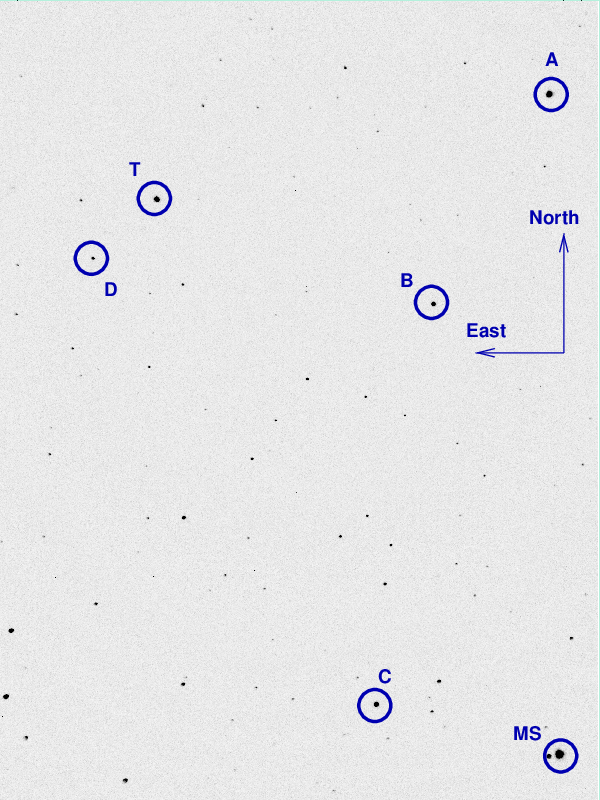
On the night of Jun 16/17, 2024, under fair conditions, I acquired images of the recurrent nova T CrB. This star undergoes outbursts at long intervals of 80 years or so. Its next outburst is predicted to occur soon, perhaps in 2024, and so I've joined the crowd who are monitoring it.
The object was still in its quiescent state tonight, at approximate V = 10.26.
I spent an hour or so looking at an object ( TCP J19284121+0811493) listed on the CBAT "Transient Objects Confirmation Page", and did confirm that it was present ... but it was too faint for me to measure accurately. Oh, well. It doesn't help that the webpage with more information on the object produces an error message "502 Bad Gateway".
This recurrent nova brightens from by about 8 magnitudes (!), from V = 10 to about V = 2, around every 80 years. Will we see another outburst this summer?
These are my first observations of this field. I plan to follow it for a few months.
These observations involved:
Notes from the night:
The picture below shows a cropped image of the field of T CrB from Jun 14/15, 2024. The field of view is about 20 arcminutes across.

I've marked the location of several comparison stars, with magnitudes and names taken from the AAVSO's chart.
star name B V
------------------------------------------------------
A 000-BJS-901 11.190 10.566
B 000-BBW-805 11.840 11.187
C 000-BPC-198 13.049 12.336
--------------------------------------------------------------------------
When the target is centered, the finder TV shows this field:
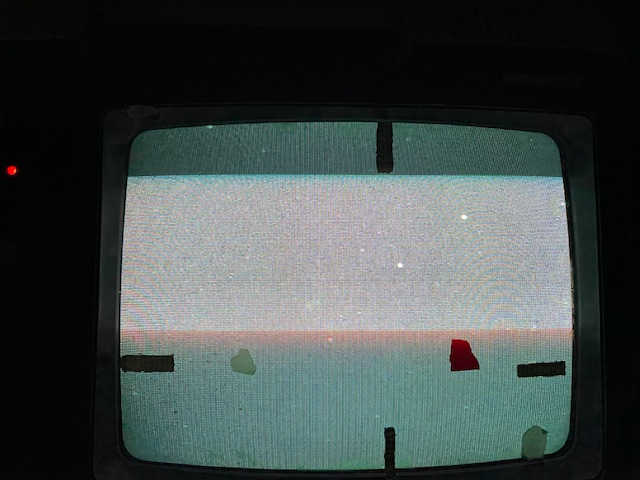
Here's the sky background over the course of the run. Note the clouds in the second half.
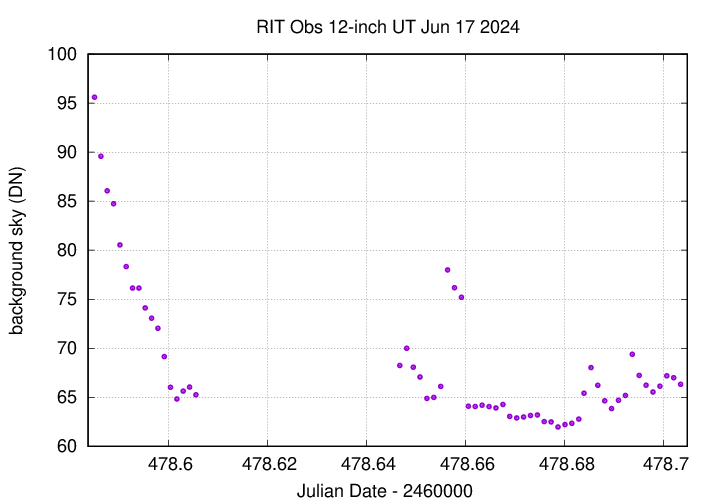
The FWHM rose a bit over time.
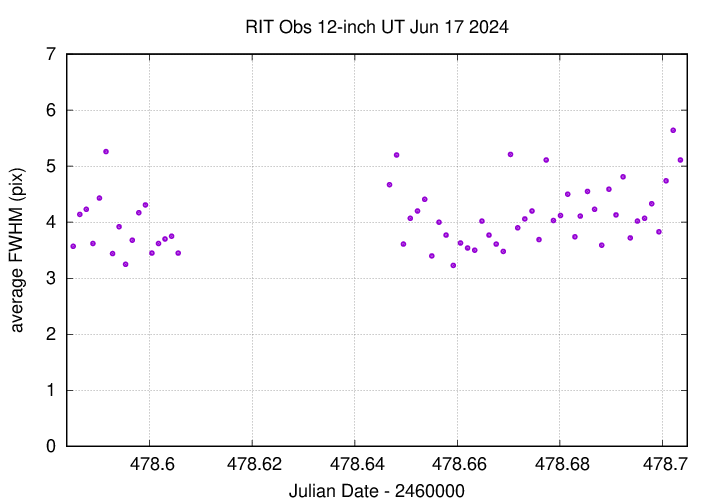
The graph below shows changes in the photometric zeropoint of an ensemble solution of the instrumental magnitudes over the course of the run. Note light clouds late in the run. The gap is due to the time I spent chasing the transient.
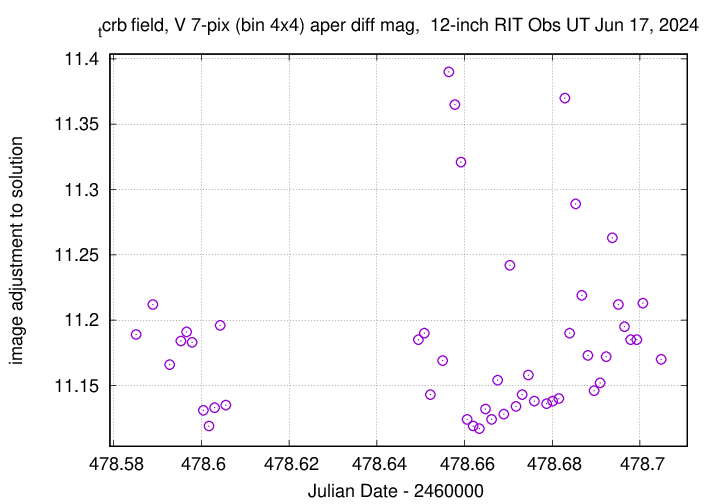
Using aperture photometry with a radius of 7 pixels in V filter (binned 4x4, each pixel is 1.036 arcsec, so a radius of 7.3 arcsec), and 7 pixels in B filter (binned 4x4, each pixel is 1.036 arcsec, so a radius of 7.3 arcsec), I measured the instrumental magnitudes of a number of reference stars and the target. Following the procedures outlined by Kent Honeycutt's article on inhomogeneous ensemble photometry, I used all stars available in each image to define a reference frame, and measured each star against this frame.
Sigma-vs-mag plots show that the floor in V-band was about 0.004 mag, which is good. It was 0.007 in B-band.
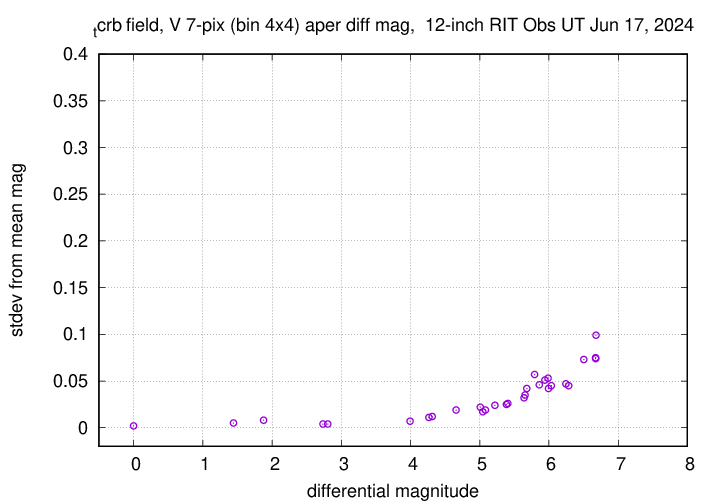
The measurements show relatively steady brightness. The B-band showed a bit more action, but nothing major.
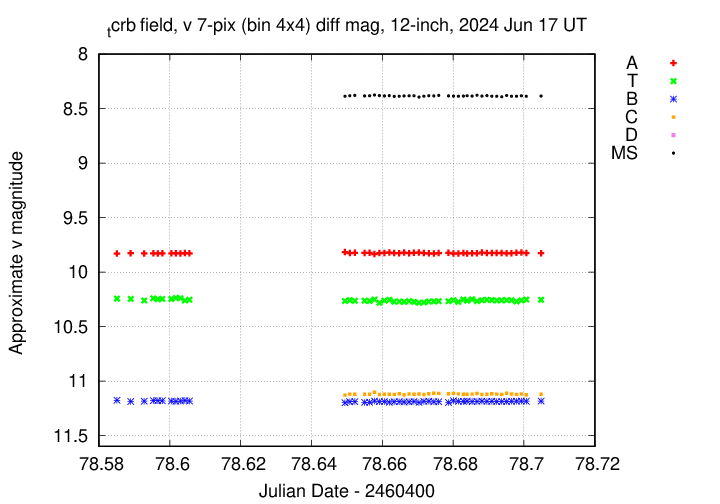
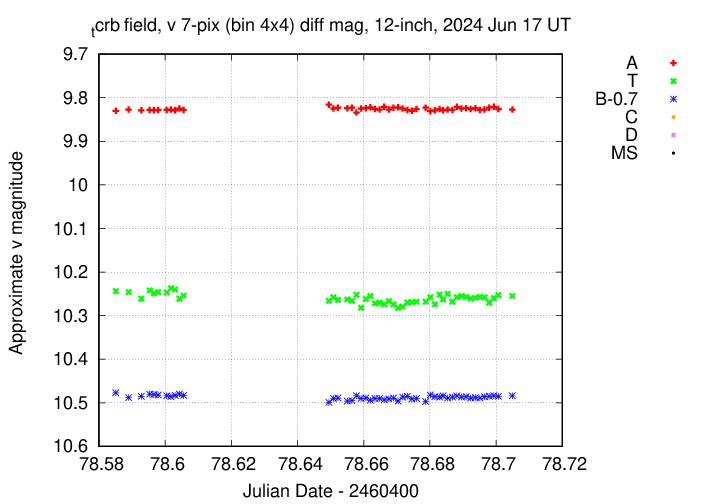
You can download my measurements below. A copy of the header of the file is shown to explain the format. First, the V-band data.
# Measurements of T_Crb made at RIT Obs, UT 2024 Jun 17, # in fair conditions, # by Michael Richmond, # using Meade 12-inch LX200 and ASI 6200MM. # Exposures 30 seconds long, v filter. # Tabulated times are midexposure (FITS header time - half exposure length) # and accurate only to +/- 1 second (??). # 'mag' is a differential magnitude based on ensemble photometry # using a circular aperture of radius 7 pix = 7.2 arcseconds. # which has been shifted so AAVSO 000-BBW-805 has mag=11.187 # which is its V-band magnitude according to AAVSO chart X36711CB. # # UT_day JD HJD mag uncert Jun17.08509 2460478.58509 2460478.58843 10.244 0.004 Jun17.08894 2460478.58894 2460478.59228 10.246 0.004 Jun17.09277 2460478.59277 2460478.59611 10.261 0.004
Now, the B-band data.
# Measurements of T_Crb made at RIT Obs, UT 2024 Jun 17, # in fair conditions, # by Michael Richmond, # using Meade 12-inch LX200 and ASI 6200MM. # Exposures 60 seconds long, b filter. # Tabulated times are midexposure (FITS header time - half exposure length) # and accurate only to +/- 1 second (??). # 'mag' is a differential magnitude based on ensemble photometry # using a circular aperture of radius 7 pix = 7.2 arcseconds. # which has been shifted so AAVSO 000-BBW-805 has mag=11.84 # which is its B-band magnitude according to AAVSO chart X36711CB. # # UT_day JD HJD mag uncert Jun17.08830 2460478.58830 2460478.59164 11.546 0.008 Jun17.09596 2460478.59596 2460478.59930 11.553 0.008 Jun17.10492 2460478.60492 2460478.60826 11.568 0.008
I've submitted these measurements to the AAVSO.